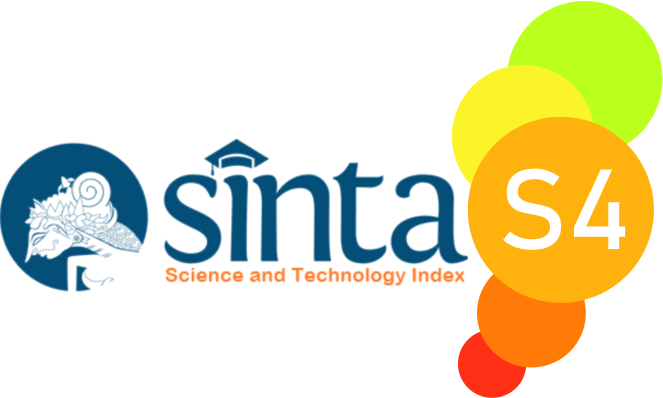Indonesian User Perception on the Usefulness of Auto-translate Feature on Social Media
Abstract
This paper focuses on the user perception of their experience in using the auto-translate feature on social media. A mixed method is employed in this study to gain quantitative and qualitative results and provide a more in-depth understanding of the analysis, with an online questionnaire as the research instrument. In order to reach a broader audience, snowball sampling is used since there are no specific criteria for the subject target. The majority of the respondents are women with bachelor's degrees aged 17-28. There are three aspects of assessment on the questionnaire following Nababan’s theory: accuracy, acceptability, and readability. The findings showed that the result of the auto-translate feature on social media has good accuracy, moderate readability, and is very acceptable. Meanwhile, the shortcomings of this feature are lack of context understanding, mistranslation due to wrong diction, and grammar updates.
References
Arvianti, G. F. (2018). Human Translation Versus Machine Translation Of Instagram’s Captions: Who is the best? 2nd English Language and Literature International Conference (ELLiC), 2.
Asmawati, A. D. (2020). Auto Translate Feature on Social Media to Learn English: A Case Study of an English Department Student. UMY Repository. Retrieved June 2, 2022, from http://repository.umy.ac.id/handle/123456789/35607.
Curtin, Richard & Presser, Stanley & Singer, Eleanor. (2000). The Effect of Response Rate Changes on the Index of Consumer Sentiment. Public opinion quarterly. 64. 413-28. 10.1086/318638.
Fadilah, E. M. (2017). Semantic Error Analysis of Instagram Machine Translation from Indonesian to English. Thesis. Syarif Hidayatullah State Islamic University Jakarta., pp. 97–98.
Goyder, J. (1986). Surveys on surveys: Limitations and potentialities. Public Opinion Quarterly, 50(1), 27–41. https://doi.org/10.1086/268957
Hatim, B., & Munday, J. (2019). Translation: An advanced resource book. Routledge, Taylor & Francis Group.
Hossain, Md. M., & Aydin, H. (2011). A Web 2.0-based collaborative model for multicultural education..Multicultural Education & Technology Journal, 5(2), 116-128.
Hutchins, J. (2012). Machine Translation: General Overview. In R. Mitkov (Ed.), Oxford Handbooks Online. Oxford University Press. https://doi.org/10.1093/oxfordhb/9780199276349.013.0027
Moore, D. L., & Tarnai, J. (2002). Evaluating nonresponse error in mail surveys. In R.M. Groves, D. A. Dillman, J. L. Eltinge, dan R. J. A. Little (Eds.), Survey nonresponse (pp. 197-211). New York: Wiley.
Nababan, M., Nuraeni, A., Sumardiono. (2012). Pengembangan Model Penilaian Kualitas Terjemahan. Kajian Linguistik dan Sastra, 24(1), 39–57.
Nuari, D., Yunanda, F., Panjaitan, K., & Renanta, F. (2022). The Analysis of Local Terms In Social Media of Indonesian Teenagers. Journey: Journal of English Language and Pedagogy, 5(1), 1-9. https://doi.org/10.33503/journey.v5i1.1816
Singer, Eleanor & J, Van & Maher, Mary Pat. (2000). Experiments with Incentives in Telephone Surveys. Public Opinion Quarterly. 64. 171-88. 10.1086/317761.
Sugiyono. (2012). Metode Penelitian Kuantitatif, Kualitatif, dan R&D. Bandung: Alfabeta.
Warriner, K., Goyder, J.C., & Miller, S. (2002). Evaluating Socio-economic Status (SES) Bias in Survey Nonresponse. Journal of Official Statistics, 18, 1-12.
Yu, Chuan. 2019. Negotiating Identity Roles During the Process of Online Collaborative Translation: An Ethnographic Approach. Translation Studies 12 (2): 231–252. doi:10.1080/14781700.2019.1692062
Copyright (c) 2022 Annissa Manystighosa, Esti Junining, Roosi Rusmawati

This work is licensed under a Creative Commons Attribution-ShareAlike 4.0 International License.

Journey: Journal of English Language and Pedagogy by http://ejurnal.budiutomomalang.ac.id/index.php/journey/index is licensed under a Creative Commons Attribution-ShareAlike 4.0 International License.






